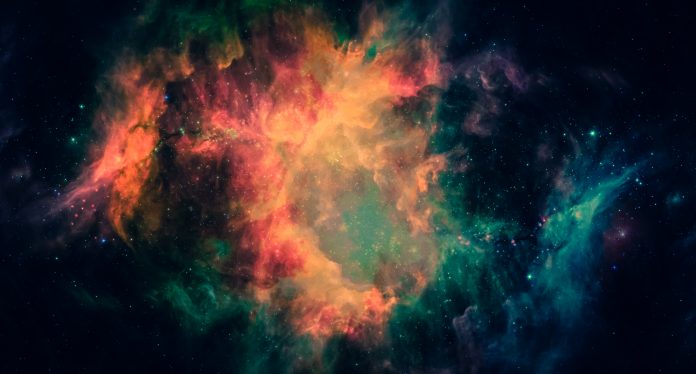Dr Thomas W. Jones, Professor of Physics and Astronomy at the University of Minnesota enlightens us as to why galaxy clusters hold vital clues about the history and nature of the universe
Huge as it is, and as much as it dominates the night sky, our home Milky Way galaxy, is just one of a trillion or so galaxies in the universe. A galaxy such as the Milky Way spans multiple tens of thousands of light-years and contains hundreds of billions of stars. Yet, together, these galaxies, rich as they are, still occupy only a tiny fraction of the volume of the universe and contain a tiny fraction of its matter. Furthermore, galaxies highlight even more impressive universe components, because it turns out that a substantial fraction of galaxies collect into clumps called galaxy clusters. The Milky Way, plus the Andromeda Galaxy and a few other smaller galaxies are, in fact, collected into a smallish cluster called the “Local Group” of galaxies spanning a million light-years or so. More populous galaxy clusters spanning several millions of light years can contain a few hundred to a few thousand individual galaxies. These galaxy clusters are then strung like knots at intersections of connecting cosmic-scale threads and are spread across the universe, making up what is called the cosmic web. The detailed nature of the cosmic web is sensitive to the basic laws of the universe that govern its history. Galaxy clusters are essential and ultimate products of web formation, thus hold vital clues about the nature of the universe and its history.
These galaxy clusters are by far the largest objects in the universe held together by gravity. Remarkably, although they are the namesake components of the clusters, galaxies fill only a minor fraction of a cluster’s volume and constitute only a couple per cent of its mass. Somewhere around 85% of the gravity holding a typical cluster together comes from broadly distributed, so-called dark matter, whose nature except that it exhibits gravity is still mostly obscure. Most of the remaining gravity comes from a tenuous, hot, ionised, and magnetised plasma, the intracluster medium (ICM) that fills the volumes between clustered galaxies. The ICM flows, sometimes smoothly, but often violently, among the galaxies in response to gravity and interactions with the galaxies and various galaxy “ejecta” (galaxy by-products). Whether smooth or violent the ICM motions inevitably become complex. Especially X-ray emissions from the hot plasma and radio emissions from embedded very high energy, electron cosmic rays uniquely trace these motions and interactions, while extracting energy from the ICM plasma, making ICMs essential instruments to study how clusters form and how they function.
Intracluster medium (ICM)
The obvious challenge is to somehow decipher those motions, the interactions and the emissions revealing them, relating the flows and emissions to both their underlying causes and to the ICM properties and local conditions that guide their development; what is going on between the galaxies and what does that tell us about clusters? Space-based X-ray telescopes and recent generations of ground-based radio telescopes have begun to reveal many fine, and often very complex details. The observations increasingly hint at the existence of complicated patterns of shock waves and circulating, turbulent motions driven especially by matter falling into clusters from the filaments, but also coming from interactions between the ICM plasmas and embedded galaxies and their ejecta.
The observed structures are revealing very sharply defined features in the ICM that are already challenging understandings of the small-scale plasma processes that determine such things as how viscous the ICM is and how does it conduct heat or electric current. Planned new generations of observatories on the ground and in space promise still more sensitive and refined views that will likely add new and even more challenging limits.
Dr Tom Jones and colleagues at the University of Minnesota are developing and using cutting edge computational tools to simulate and characterise behaviours of ICM motions and their interactions with galaxies and galaxy by-products to track down diagnostic signatures pointing to how clusters form and work inside, as well as to finding distinguishing signatures of the physical nature of the ICM itself, for example, how viscous is it, how magnetised is it, how well does it trap and energise the high energy cosmic ray electrons responsible for observed radio emissions, and so forth.
These innovative simulation studies include two distinct classes of simulations: those that actually follow in detail down to the size of an individual galaxy the full formation of multiple, co-evolving clusters starting after the Big Bang and extending over multiple billions of years, plus simulations that zoom in with much finer detail over shorter time intervals of a few million years on selected locations and times within individual clusters in order to get detailed pictures of how things work.
The simulations follow the ICM behaviours themselves according to the dynamics of magnetised fluids, called Magnetohydrodynamics (MHD), now coupled with cosmic rays on the one hand, along with the dynamics of dark matter particles that provide most of the gravity expected to play important roles on larger scales and especially in the simulations that follow the full formation of clusters. Since there are multiple competing theories for the behaviours of cosmic rays, and especially for how they gain energy at the expense of the ICM, the simulations are designed to explore the importance of differences in those theories. The dynamical simulations utilise a remarkably fast and accurate new computer code called WENO-WOMBAT, based on an MHD code developed by an international team that includes Dr Jones.
The dynamical simulations are accompanied by computations of theoretical images for observable X-ray and radio emissions that can be used to help discriminate among different dynamical behaviours and to help test the various theories for cosmic ray behaviours by predicting observable emissions that can, again, be compared to available of future observations of real clusters.
Please note: This is a commercial profile











